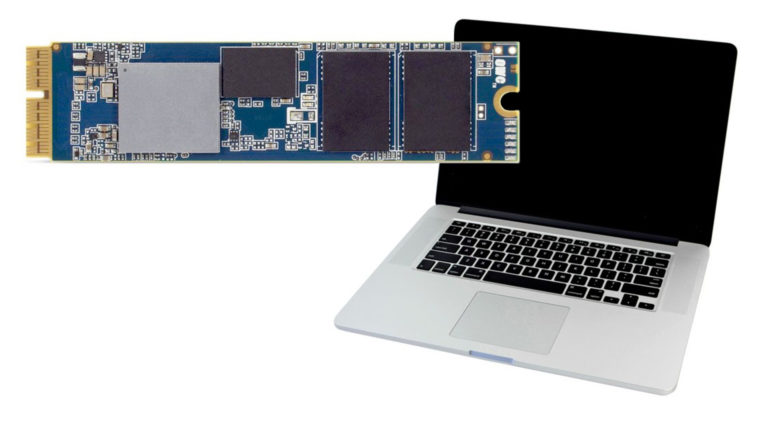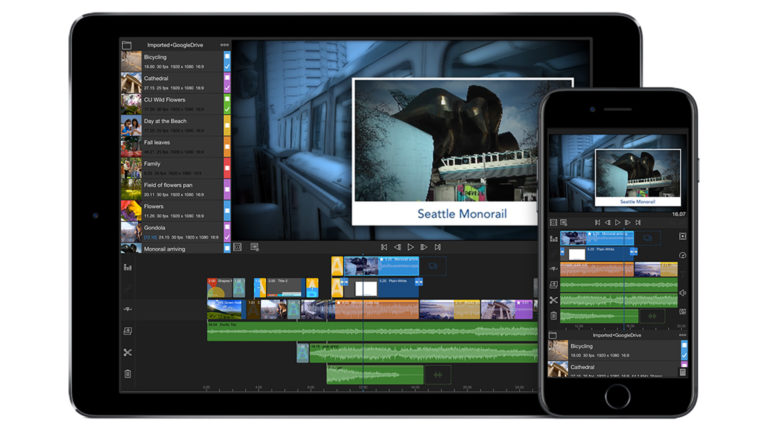Need the Most Powerful and Expandable Workstation Available? Here It Is.
In the world of content creation, nothing stands still for long. If you work in video production, you may be moving to a 4K or RAW video format. If you have a Creative Suite workflow, you may be considering a higher-resolution monitor with expanded color space. If you use an NLE, you may need to bump up the number of tracks or smooth your real-time scrubbing.
These things could require more horsepower than your current workstation can muster. If you frequently yell at your system to hurry up, or find yourself postponing important advances in technology, it may be time to upgrade to a faster, more expandable system, such as the new top-of-line HP Z820 workstation.
The Z820 replaces the venerable Z800, which was introduced in 2009. With the Z820, you’ll benefit from the latest Intel “Sandy Bridge” Xeon processors and associated chipsets. You’ll also be able to run as many as 16 cores when you install two CPUs into the system. The Z800, which used the previous-generation “Gulftown” Xeon processors, topped out at 12 cores.
Increased Bandwidth
Along with the processor upgrade, the Z820 has significantly faster system memory. In fact, the faster memory is probably the Z820’s biggest improvement in terms of raw performance. The Z820 uses a four-channel memory architecture, as opposed to the three-channel memory architecture in the Z800. That gives it roughly a 30-percent increase in available memory bandwidth. In addition, the Z820 supports 1600MHz RAM, in contrast to the 1333MHz RAM in the Z800. That frequency boost provides another 20-percent boost in memory bandwidth. According to HP, the enhancements provide an overall 60 percent increase in memory speed.
What does that mean in practical terms? You may be able to dramatically improve the performance of any video that’s stored in memory. As a result, you would have a strong incentive to load up your system with substantial amounts of RAM. If you can fit your entire project in memory, you may be able to eliminate any lags or stuttering even when you apply large numbers of effects or plug-ins.
Fortunately, the sky is almost the limit when it comes to adding memory to the Z820. With the Z820, you can install as much as 512GB of RAM in contrast to a maximum 192GB with the Z800. That’s half a terabyte of system memory, assuming you’re willing to put out the dizzying amount of money that it would take to purchase that much RAM. The Z820 has 16 DIMM slots for its DDR3 memory, which would give you plenty of flexibility in deciding which size DIMMs would fit your needs.
Many of the improvements reflect advances in technology that occurred after the Z800 was introduced. For example, the Z820 has third-generation PCI Express slots, as opposed to the second-generation PCI Express slots found in the Z800. If you have one CPU installed, you’ll have two PCI Express Gen3 x 16 slots available. If you have two CPUs installed, you’ll have three PCI Express Gen3 x 16 slots available. The Z820 uses a current-generation 6 gigabit-per-second SAS (Serial Attached SCSI) hard drive controller, as opposed to the previous-generation 3 gigabit-per-second SAS controller found in the Z800. And the Z820 has four USB 3.0 ports (two in the front, and two in the back), along with five USB 2.0 ports. By contrast, the Z800 had nine USB 2.0 ports, but no USB 3.0 ports, which weren’t available back in 2009.
Low Noise Zone
A big concern for many workstation owners is system noise. HP doesn’t include the decibel level in the Z820 specifications, probably because system noise can vary widely depending on the configuration and workload. I found the review unit to be relatively quiet. You can certainly hear it when you place your head within a few feet of the chassis, but even then, it’s a fairly innocuous fan noise that would be easy to ignore.
According to HP, the Z820 has roughly the same acoustic levels as the Z800. That’s surprising given the more demanding hardware specs. The Z820 can support two 150-watt Xeon processors, as opposed to the two 130-watt Xeon processors on the Z800. And it has to support four additional DIMM slots, as the Z800 had 12 memory slots as opposed to 16.
How did HP do it? To eliminate the additional system noise, the company redesigned the way the CPU and memory are cooled. They also modified the hard drive cage to dampen vibrations, which could have been an issue with the 6 gigabit-per-second 15,000rpm SAS drives. As a result, the Z820 is quieter than you would expect given the leading-edge components. It also generates very little heat. When revved up with a graphics-heavy workload, the chassis never felt excessively warm to touch.
Fast Enough for You?
The review unit was equipped with dual eight-core 2.2GHz processors (Xeon E5-2660), 16GB of RAM, and an NVIDIA Quadro 4000 graphics card. At $6,556, this would be a good middle-of-the-road configuration for those struggling with a demanding workload. Of course, you could go for the fastest components available—including dual eight-core 3.1GHz processors (Xeon E5-2660) and a Quadro 6000 graphics card—but that would make this model considerably more expensive.
Even with a midrange configuration, the Z820 breezed through our benchmarks. With the 64-bit version of Cinebench 11.5, the Z820 racked up a speedy 58.07 fps on the Open GL test. That’s roughly the same score as the HP Z1 all-in-one workstation, which isn’t too surprising as both review configurations had a Quadro 4000 chipset. The Z820’s Cinebench CPU score was 16.74 points (versus 6.99 points for the Z1). That lofty score was the result of the two Sandy Bridge processors running with 16 cores and 32 threads. Cinebench, which is based on Maxon's Cinema4D animation software, is an excellent benchmark for evaluating graphics rendering. It’s available for free online, so you could run it on your current system to determine how your workstation might compare with the Z820.
The Z820 also turned in an outstanding performance with PCMark Vantage. This benchmark is designed to test a PC’s ability to work with photos, video, and music, as well as tasks related to games, communications, productivity, and security. PCMark Vantage is available in a free version. Interestingly, the Z820’s score of 17,453 was slightly behind the 18,503 score for the Z1. That might seem odd, until you consider that the Z1 as reviewed was essentially maxed out with its fastest components. The Z820, on the other hand, can be expanded with far more powerful components than the Z1.
Beyond the Numbers
While benchmarks can be useful, they don’t tell the whole story. That’s particularly true with a highly expandable workstation, such as the Z820. A second processor or massive amounts of RAM might improve the benchmark scores only slightly. Yet a second processor or massive amounts of RAM might let you substantially increase the number of effects or tracks with your current workload.
Benchmarks can’t reliably measure the consequences of cumulative content, where you’re constantly bumping up against a performance wall because you’re trying to do too much. You could configure almost any high-end workstation in a way that would max out the benchmarks. What’s more important is how expandable and adaptable the workstation will be for your type of projects.
The Z820 is truly impressive. It took pretty much anything I could throw at it. Your mileage will vary, of course, but I found myself heaping on extra effects and tracks that were well beyond what I could imagine needing—just to tease out the limits of the system. Because you can configure this model with the fastest components available, that seemed to be a pointless exercise. If you need the most powerful system available, then you should configure the Z820 with its most powerful components—and pay a high purchase price for the privilege. On the other hand, if you don’t need as powerful a system, you could scale down the components and pocket the savings.
Why Not a Z620?
HP announced the new Z620 workstation at the same time the Z820 was announced. It’s a highly capable workstation with a starting price of just $1,649, as opposed to a starting price of $2,299 for the Z820. So why not choose the Z620 instead of the Z820? The main difference is expandability. Both support the new Sandy Bridge processors, and both support dual processors. However, the Z820 can accept the highest-speed 3.1GHz Xeon E5-2687W processor, which is a 150-watt processor. The Z620 is limited to 135-watt processors, which top out at 2.9GHz.
Inside the Z820
The Z820 also has more I/O slots than the Z620, and more of those are high-performance slots. For example, the Z820 has five third-generation PCI Express slots, where the Z620 has three. Both have a four-channel memory architecture. However the Z820 is more expandable, because it has 16 memory slots as opposed to the 12 slots in the Z620.
Similarly, the Z820 has four internal 3.5-inch drive bays and three external 5.25-inch bays, where the Z620 has three internal 3.5-inch bays and two external 5.25-inch bays. Those two extra bays could come in handy for adding an optical drive, hard drive, or media card reader.
Finally, the Z820 has an eight-channel 6-gigabit SAS controller integrated onto the motherboard. The Z620 does not. You would need to purchase an add-in board for that, which would take away an expansion slot and narrow the price savings over the Z820.
If these differences seem insignificant, then you may be better off with the Z620. That said, the Z820 would be the better choice for digital media applications where the processors and GPUs aren’t powerful enough to handle all the media that needs to be processed. There are processor-assist cards that can help handle those demanding workloads. If that’s your situation, the two additional high-performance slots in the Z820 may be more important to you than the marginal increase in processor speed over the Z620.
Power, for a Price
The HP Z820 workstation is the new top dog in town for both performance and expandability. While the entry price is $2,299, that system would include only 4GB of RAM and have no dedicated graphics card. A more practical configuration might have a six or eight core processor, 16GB to 24GB of RAM, a Quadro 2000 or Quadro 4000 graphics card, two 1TB hard drives, and a Blu-ray writer. Expect to pay in the neighborhood of $4,000 to $6,000 for that kind configuration, with much of the difference dependent on the processor speed. That wouldn’t be cheap, but your system would be able to handle a large dataset without hesitation.
If you need to slim down the price, consider having more of your money go to the processor and less to the graphics and storage subsystems, which can be more easily upgraded. You could always drop down to a less expensive model—either from HP or another manufacturer. However, there’s a lot to be said for having a workstation that can fully expand as your needs change.











